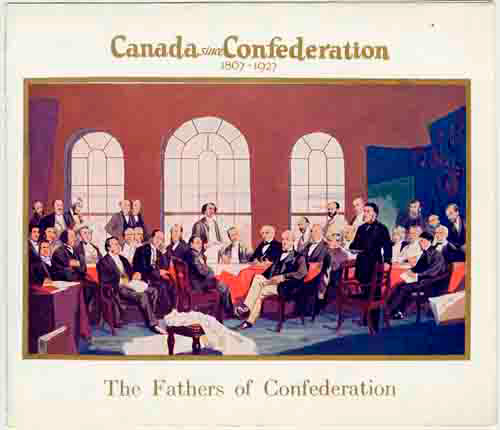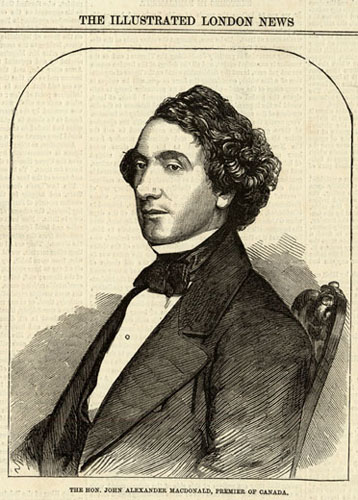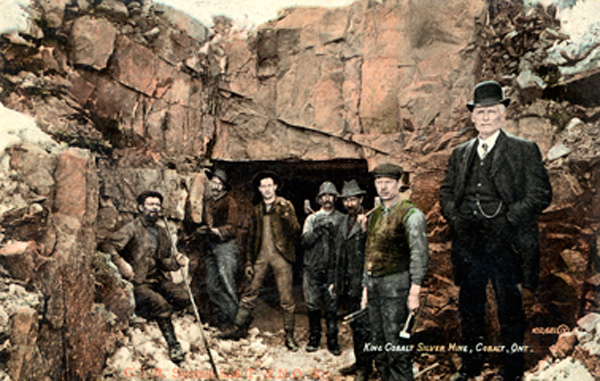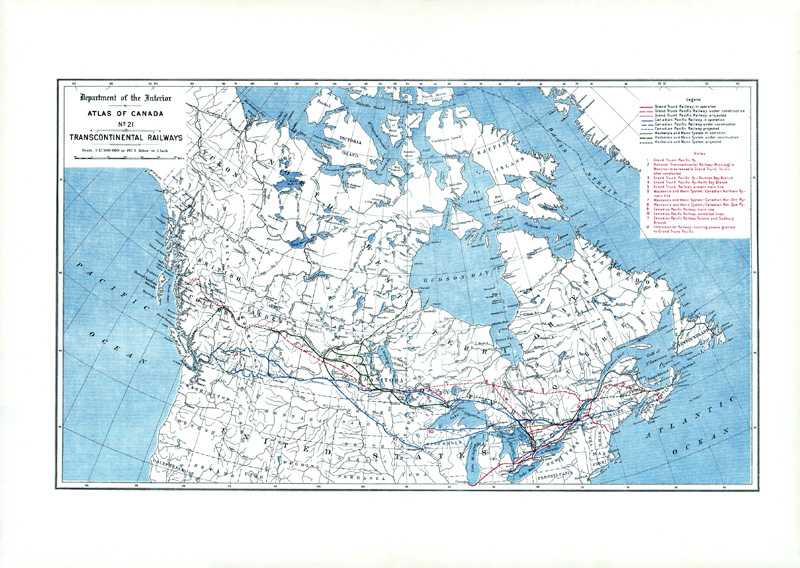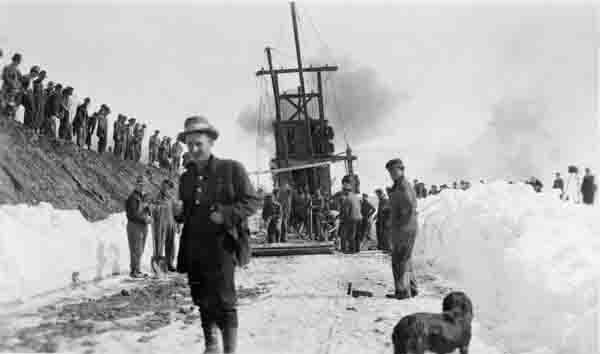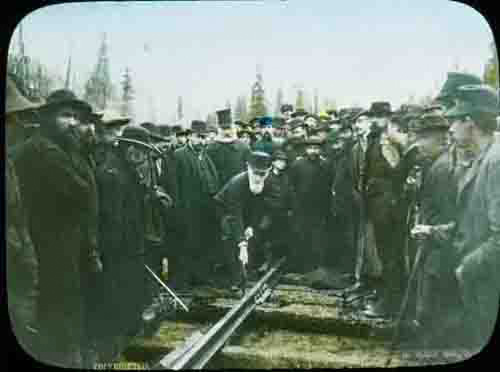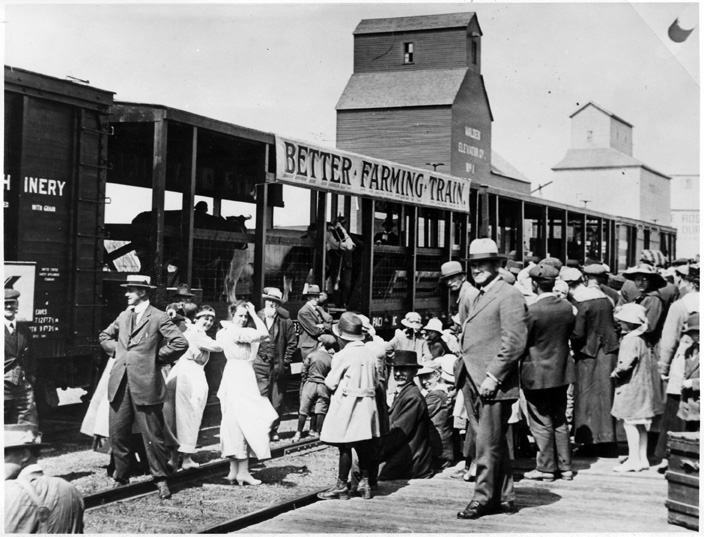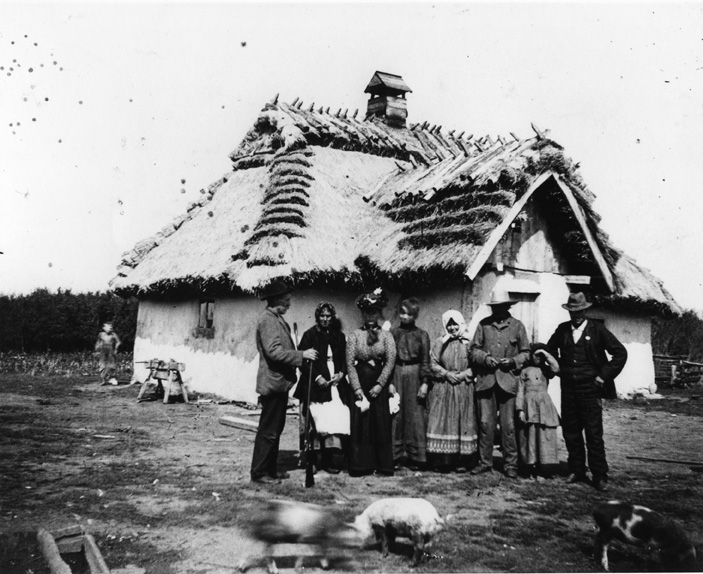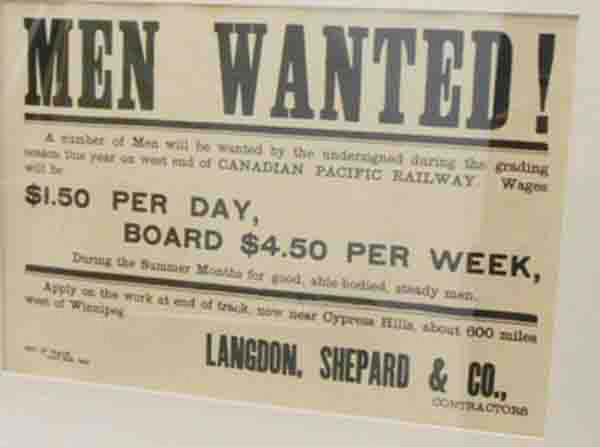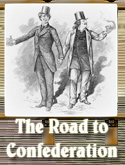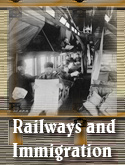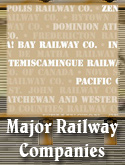Railways: The Road to Confederation
For several decades following its construction, the railway would remain the only means of transportation connecting and uniting regions far from major cities. Building a trans-Canada railway became the “National Dream” of Prime Minister John A. Macdonald.
In exchange for joining the Canadian Confederation, provinces were promised a railway link. Construction of the railway would provide work for hundreds of thousands people, in addition to establishing Canada’s reputation abroad and encouraging colonization. The exploitation of natural resources, agriculture and the efficient transportation of goods and passengers transformed the new country of Canada into a competitive economic force.
Train stations, new towns and industries sprang up all along the railway lines.
The National Dream on trackConstruction of the first trans-Canada railway by Canadian Pacific opened the way to welcome new provinces into the Canadian Confederation and contributed significantly to Canada’s economic growth and increasing population. Not only did the railway unify the western territories into new Canadian provinces, its initial construction and subsequent development paved the way for the country’s future development.
Starting with completion of the first transcontinental railway in 1885, Canada would see three transcontinental railways built before 1920:
- The Canadian Pacific Railway, completed on November 7, 1885
- Canadian Northern Railway, completed on January 23, 1915
- The Grand Trunk Railway, completed in 1914
A growing country
The Dominion of Canada was born in 1867 as a Confederation of four provinces that united to encourage economic development. The new country’s constitution included an important stipulation: a railway would be built in every Canadian province where one did not yet exist. The original provinces joining Confederation in 1867 were Québec, Ontario, New Brunswick and Nova Scotia. In the years to follow, other provinces were created (see the table) and added to the Dominion. When Prime Minister John A. Macdonald came to power with his National Policy of protectionism, which imposed customs tariffs to limit competition from the United States, Canada began to develop quickly and its economy flourished.
When British Columbia joined Canada in 1871, the government of Canada needed to ensure a strong national economy that could compete with that of the United States. The completion of the first transcontinental railway by Canadian Pacific in 1885 fulfilled a promise John A. Macdonald had made to British Columbia as a condition for joining Confederation.
Before the railway was built, the fur trade was the main economic activity on the Prairies. Once the region’s agricultural potential was proven, new communities of immigrants from other provinces and European countries were established and farming began to develop. Manitoba joined Confederation in 1870, followed by Alberta and Saskatchewan in 1905.
In 1901, nearly half the residents of the Prairies were immigrants. The emerging agricultural industry, together with passenger transportation, contributed to the development and growth of the railway. Supplies delivered by train enabled cities and towns far from major urban centres to flourish. Specially designed Better Farming Trains went from town to town training new farmers in the skills they required.
Farming the land and building towns still required a labour force, however, and the government of Canada launched a major advertising campaign, together with Canadian Pacific, to attract immigrants and settlers to the Prairies.
With their Atlantic seaports, the Maritimes also played an important role in welcoming goods and immigrants to Canadian shores. Moreover, the region’s natural resources, such as coal and wood, were exploited and delivered to the rest of the country by train.
By around 1905, the railway was firmly established in Canada. It had become indispensable to trade as well as for the transportation of goods and people.








